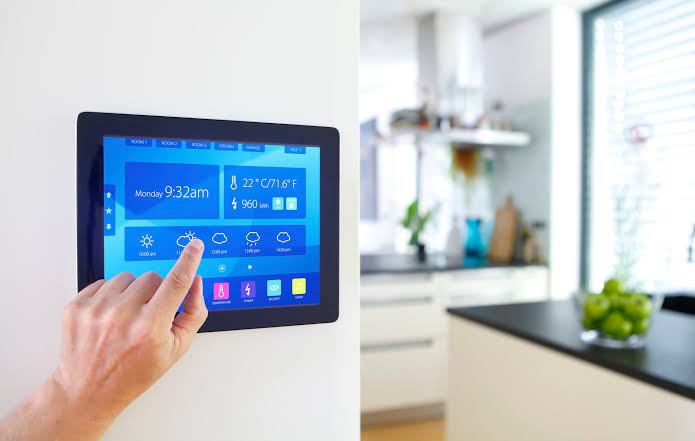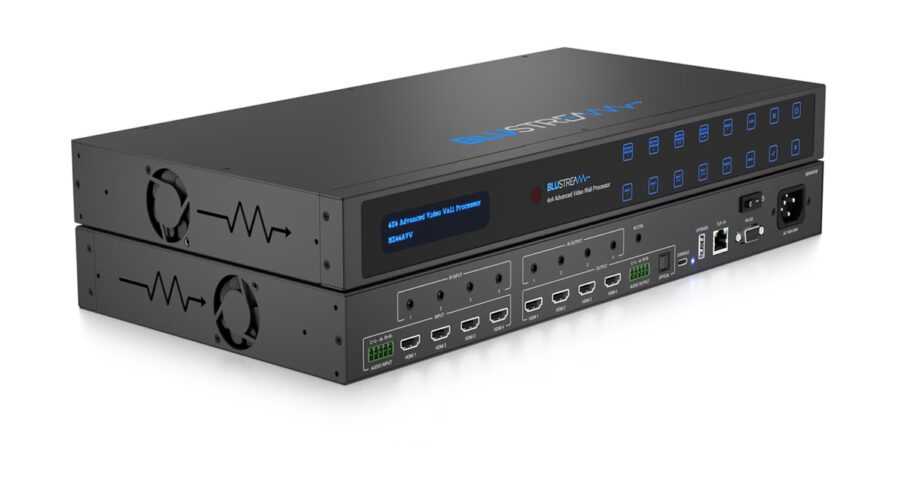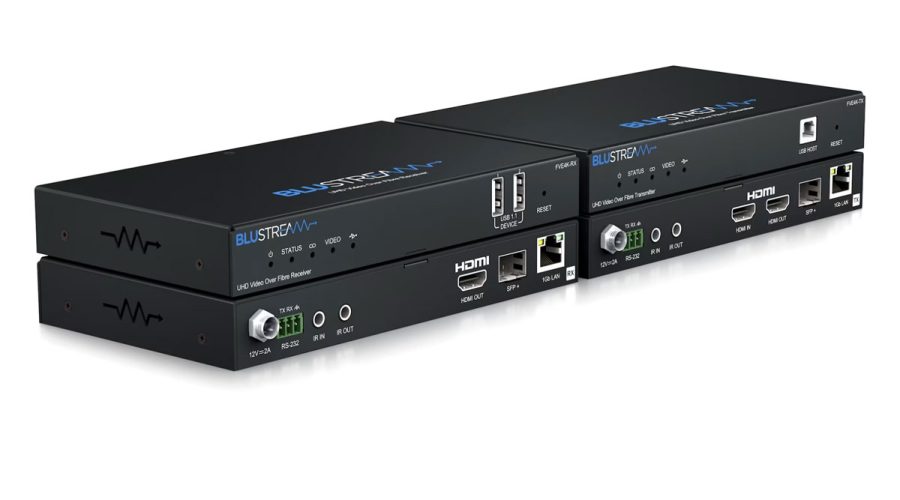Transforming daily routines with smart home technology can make mornings a breeze. Imagine waking up to lights gradually illuminating your living room and kitchen at 5 AM, while your security system disarms for the day.
As the sun rises, shades lift, the thermostat adjusts, and bedside lamps gently brighten to simulate natural light, preparing you to start the day. Smart speakers chime in with calendar updates and weather forecasts, helping you plan ahead.
The magic continues as you step into the bathroom, where motion sensors activate lights and your favorite radio station starts playing if it’s past 6 AM. This synchronized choreography exemplifies the convenience of a smart home setup, where devices can be seamlessly controlled remotely via internet-connected devices like smartphones or tablets.
Smart homes feature a range of connected appliances, from light bulbs and thermostats to doorbells and refrigerators. The key to their intelligence lies in connectivity, enabling remote access, inter-device communication, and automatic updates. This interconnected web of devices forms the foundation of the Internet of Things, enhancing our daily lives with efficiency and automation.
Beyond convenience, smart home systems offer homeowners peace of mind by centralizing control and providing real-time notifications. Whether adjusting temperatures, monitoring security cameras, or managing energy usage, the ability to oversee your home remotely ensures comfort and security even when you’re away.
Investing in smart home technology not only streamlines daily tasks but also leads to long-term cost savings. By optimizing appliance usage and enhancing energy efficiency, homeowners can reduce utility expenses and minimize wastage, making the transition to a smart home a smart financial decision.







Were you aware that over 60% of medication users commit preventable medication errors because of poor understanding?
Your health should be your top priority. Each pharmaceutical choice you make plays crucial role in your long-term wellbeing. Being informed about medical treatments isn’t optional for disease prevention.
Your health depends on more than following prescriptions. Each drug changes your biological systems in unique ways.
Remember these essential facts:
1. Mixing certain drugs can cause dangerous side effects
2. Even common pain relievers have serious risks
3. Skipping doses undermines therapy
To protect yourself, always:
✓ Verify interactions using official tools
✓ Study labels thoroughly prior to using new prescriptions
✓ Speak with specialists about potential side effects
___________________________________
For professional drug information, visit:
https://community.alteryx.com/t5/user/viewprofilepage/user-id/569153
On this platform, you can find a wide selection of slot machines from famous studios.
Users can try out retro-style games as well as feature-packed games with high-quality visuals and exciting features.
Whether you’re a beginner or an experienced player, there’s always a slot to match your mood.
play aviator
Each title are available round the clock and compatible with PCs and smartphones alike.
You don’t need to install anything, so you can start playing instantly.
Platform layout is intuitive, making it simple to find your favorite slot.
Join the fun, and enjoy the world of online slots!
On this platform, you can access a great variety of online slots from top providers.
Visitors can enjoy classic slots as well as new-generation slots with vivid animation and exciting features.
If you’re just starting out or a casino enthusiast, there’s a game that fits your style.
casino slots
All slot machines are available round the clock and compatible with PCs and mobile devices alike.
You don’t need to install anything, so you can jump into the action right away.
The interface is easy to use, making it quick to find your favorite slot.
Join the fun, and discover the thrill of casino games!
Here, you can access a wide selection of slot machines from leading developers.
Visitors can experience retro-style games as well as feature-packed games with vivid animation and exciting features.
If you’re just starting out or an experienced player, there’s always a slot to match your mood.
play casino
All slot machines are ready to play anytime and compatible with desktop computers and tablets alike.
All games run in your browser, so you can start playing instantly.
The interface is easy to use, making it simple to browse the collection.
Sign up today, and dive into the thrill of casino games!
This website, you can discover lots of casino slots from leading developers.
Players can enjoy traditional machines as well as feature-packed games with high-quality visuals and interactive gameplay.
Even if you’re new or a seasoned gamer, there’s something for everyone.
slot casino
The games are ready to play anytime and optimized for PCs and smartphones alike.
All games run in your browser, so you can start playing instantly.
The interface is intuitive, making it quick to find your favorite slot.
Join the fun, and enjoy the world of online slots!
The digital drugstore provides an extensive variety of medications with competitive pricing.
Customers can discover all types of drugs to meet your health needs.
Our goal is to keep safe and effective medications without breaking the bank.
Speedy and secure shipping ensures that your purchase is delivered promptly.
Take advantage of getting your meds on our platform.
vidalista 2.5mg
The digital drugstore provides an extensive variety of pharmaceuticals with competitive pricing.
You can find various drugs for all health requirements.
We work hard to offer trusted brands without breaking the bank.
Quick and dependable delivery guarantees that your medication arrives on time.
Enjoy the ease of getting your meds on our platform.
silagra 100mg
This online pharmacy offers a wide range of medications at affordable prices.
Customers can discover all types of medicines suitable for different health conditions.
Our goal is to keep high-quality products without breaking the bank.
Speedy and secure shipping ensures that your order gets to you quickly.
Experience the convenience of ordering medications online on our platform.
kamagra 100mg pills
Эффективное программирование контроллеров Siemens, основные принципы.
Лучшие практики программирования контроллеров Siemens, разоблачаем.
Преимущества TIA Portal в программировании контроллеров Siemens, для улучшения навыков.
Как избежать ошибок в программировании контроллеров Siemens, основные причины.
Как спроектировать систему автоматизации с Siemens, советы.
Сравнение контроллеров Siemens, для оптимальной работы.
Сравнение языков программирования для контроллеров Siemens, рекомендации.
Лучшие решения автоматизации с контроллерами Siemens, для всех сфер.
Современные тенденции в программировании контроллеров Siemens, что нужно знать.
Как разработать интерфейс для контроллера Siemens, полезные рекомендации.
Запрограммировать Siemens [url=https://www.programmirovanie-kontroller.ru#Запрограммировать-Siemens]https://www.programmirovanie-kontroller.ru[/url] .
On this platform, you can discover a great variety of casino slots from famous studios.
Visitors can enjoy classic slots as well as new-generation slots with stunning graphics and interactive gameplay.
Even if you’re new or a seasoned gamer, there’s always a slot to match your mood.
casino games
All slot machines are ready to play 24/7 and compatible with PCs and tablets alike.
All games run in your browser, so you can jump into the action right away.
Site navigation is user-friendly, making it simple to explore new games.
Register now, and discover the excitement of spinning reels!
[b] Portable balancer & Vibration analyzer Balanset-1A [/b]
[b] Description: [/b]
[url=https://allegro.pl/oferta/balanser-dynamiczny-balanset-1a-oem-set-16713019136][img]https://vibromera.eu/wp-content/uploads/2021/11/%D0%91%D0%B0%D0%BB%D0%BA%D0%BE%D0%BC%D0%9A%D0%B8%D1%82-scaled-e1732998877834.jpg[/img][/url]
[b]Price:[/b]
7500 PLN / 44250 CZK / [b]1751 EUR[/b] / 715000 HUF [b]Full kit[/b] [url=https://allegro.pl/oferta/przenosny-wywazarka-i-analizator-drgan-balanset-1a-kompletny-zestaw-16654413800] Order on Allegro [/url]
6700 PLN / 39550 CZK / [b]1561 EUR[/b] / 640000 HUF [b]OEM kit[/b] [url=https://allegro.pl/oferta/balanser-dynamiczny-balanset-1a-oem-set-16713019136] Order on Allegro [/url]
Save [b]€100[/b] on [url=https://vibromera.eu/shop/874/]vibromera.eu[/url] with promo code [b]VB100![/b]
[b]Overview of the Balanset-1A Device[/b]
The Balanset-1A is a compact, dual-channel tool created for balancing and vibration analysis of rotating machinery. It excels in balancing rotors such as crushers, fans, mulchers, choppers, shafts, centrifuges, turbines, and more.
[b]Core Features and Capabilities[/b]
[b]Vibrometry Mode[/b]
Tachometer: Precise rotational speed measurement (RPM).
Phase: Accurately determines the phase angle of vibration signals for precise analysis.
1x Vibration: Measurement and analysis of the dominant frequency component.
FFT Spectrum: Detailed analysis of the vibration signal’s frequency spectrum.
Overall Vibration: Monitoring the total vibration level.
Measurement Log: Stores data for subsequent analysis.
[b]Balancing Mode[/b]
Single-Plane Balancing: Corrects rotors in one plane to decrease vibration.
Two-Plane Balancing: Dynamic rotor balancing in two planes.
Polar Diagram: Shows imbalance on a polar chart for precise weight positioning.
Last Session Recovery: Enables continuation of the previous balancing session.
Tolerance Calculator (ISO 1940): Determines acceptable imbalance in accordance with ISO 1940.
Grinding Wheel Balancing: Utilizes three counterweights to balance grinding wheels.
[b]Graphs and Diagrams[/b]
Overall Graphs: Displays general vibration levels.
1x Graphs: Represents vibration behavior at the main frequency.
Harmonic Graphs: Shows the influence of harmonic frequencies.
Spectral Graphs: Displays the frequency spectrum for detailed analysis.
[b]Additional Capabilities[/b]
Archive: Archive and access prior balancing sessions.
Reports: Produce detailed reports on balancing results.
Rebalancing: Enables rebalancing using stored session data.
Serial Production Balancing: Suitable for balancing rotors during serial production.
[b]What’s in the Package[/b]
The Balanset-1A kit includes:
A measurement module with interface.
Two vibration sensors.
Optical laser tachometer with magnetic mount.
Electronic scales.
Software (laptop not included, available for purchase).
Protective transport case.
[b]Price:[/b]
7500 PLN / 44250 CZK / [b]1751 EUR[/b] / 715000 HUF [b]Full kit[/b] [url=https://allegro.pl/oferta/przenosny-wywazarka-i-analizator-drgan-balanset-1a-kompletny-zestaw-16654413800] Order on Allegro [/url]
6700 PLN / 39550 CZK / [b]1561 EUR[/b] / 640000 HUF [b]OEM kit[/b] [url=https://allegro.pl/oferta/balanser-dynamiczny-balanset-1a-oem-set-16713019136] Order on Allegro [/url]
Save [b]€100[/b] on [url=https://vibromera.eu/shop/874/]vibromera.eu[/url] with promo code [b]VB100![/b]
This website, you can find a great variety of casino slots from top providers.
Visitors can enjoy retro-style games as well as new-generation slots with vivid animation and exciting features.
If you’re just starting out or a casino enthusiast, there’s always a slot to match your mood.
slot casino
All slot machines are available anytime and compatible with PCs and tablets alike.
You don’t need to install anything, so you can get started without hassle.
Platform layout is user-friendly, making it quick to find your favorite slot.
Sign up today, and discover the excitement of spinning reels!
This service offers adventure rides on Crete.
Anyone can safely arrange a ride for exploration.
When you’re looking to travel around natural spots, a buggy is the exciting way to do it.
https://www.reverbnation.com/buggycrete
Our rides are safe and clean and offered with flexible plans.
Through our service is hassle-free and comes with clear terms.
Get ready to ride and enjoy Crete on your own terms.
Here, you can find lots of online slots from top providers.
Visitors can experience retro-style games as well as modern video slots with high-quality visuals and interactive gameplay.
Whether you’re a beginner or an experienced player, there’s always a slot to match your mood.
casino games
All slot machines are ready to play anytime and compatible with laptops and smartphones alike.
No download is required, so you can start playing instantly.
Platform layout is user-friendly, making it simple to browse the collection.
Sign up today, and enjoy the excitement of spinning reels!